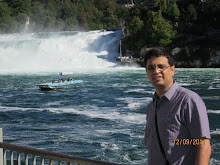While Service Providers and Vendors across the world plan 4G and 3.5G deployments, in India we are still dabbling over when the 3G auctions should occur. As of now the 3G auctions should occur in January 2009. However with mud-slinging over the under-pricing of the 2G spectrum continuing, this might get delayed. Currently we are stuck with 2.5 G technologies which are a generation behind the world.
The question facing GSM operators is that as and when the 3G spectrum is allotted should they launch with vanilla WCDMA or straightaway move to HSPA or even HSPA+. It would make sense as HSPA and HSPA+ are backward compatible to 3G and require only software patch upgrades.
If they do start with HSDPA the next year will change the way people view mobile internet in India. Currently the peak download speed one experiences on the EDGE network varies from 30kbps-100kbps. However if operators launch with HSDPA this might zoom up to 10Mbps. Basically implying that the 5 MB video which took an eternity to download would reach your device in 4 seconds! Now that is lightening quick. The good news continues with uploads speeds reaching 384 kbps. Ofcourse these speeds will come with riders like handset type, base station backhaul capacity, signal strength, subscribr location entwork loading etc. Every factor accounted for the user experience will still be far better than what is currently delivered.
This is good news for content providers and application developers who can develop rich mobile content for better customer experience. Mobile operators on their part will need to come up with data tariff plans which encourage more data uptake and are easy on the customer's pocket.



